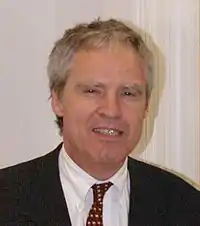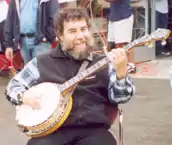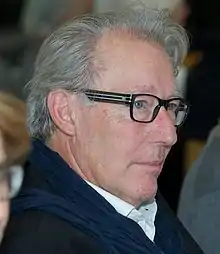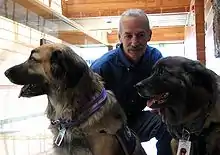Nano/Bio Interface Center
The Nano/Bio Interface Center is a Nanoscale Science and Engineering Center at the University of Pennsylvania. It specializes in bionanotechnology, combining aspects of life sciences and engineering,[1] with a particular focus in biomolecular optoelectronics and molecular motions, including developing new scanning probe microscopy techniques.[2][3] It offers a master's degree in nanotechnology. The center was established in 2004 with a US$11.6 million grant from the National Science Foundation, and received an additional $11.9 million grant in 2009.[4] By 2013, it had constructed a new facility, the Krishna P. Singh Center for Nanotechnology.[5]
Award for Research Excellence in Nanotechnology
The Award for Research Excellence in Nanotechnology is given by the Nano/Bio Interface Center each year to an outstanding researcher in nanotechnology.[6] The award is given each year at the center's NanoDay outreach event.[5]





References
- "Nano/Bio Interface Center". Retrieved 2015-11-12.
- Wray, P. (2009-09-22). "University of Pennsylvania's Nano/Bio Center scoops $11.5M NSF grant". The American Ceramic Society. Retrieved 2015-11-12.
- Tomczyk, Michael (2014-12-22). NanoInnovation: What Every Manager Needs to Know. John Wiley & Sons. p. 108. ISBN 9783527326723.
- Key, Peter (2009-10-12). "2 disparate Penn tech programs receive millions of dollars - Philadelphia Business Journal". Philadelphia Business Journal. Retrieved 2015-11-12.
- "Annual NanoDay@Penn to be Hosted at Nano/Bio Interface Center". Azo Nano. 2013-10-18. Retrieved 2015-11-12.
- "Award for Research Excellence in Nanotechnology". UPenn Nano/Bio Interface Center. Retrieved 21 May 2012.
- "NanoDay@Penn Schedule of Events" (PDF). University of Pennsylvania. Retrieved 2 August 2013.
- "NBIC Award for Research Excellence in Nanotechnology: Toshio Ando, 2012 Recipient" (PDF). University of Pennsylvania. Retrieved 9 December 2012.
- "NanoDay@Penn". UPenn Nano/Bio Interface Center. Retrieved 29 June 2014.
- Damery, Jonathan (12 November 2013). "Lyding receives NBIC award". UIUC Department of Electrical and Computer Engineering. Retrieved 29 June 2014.
- "Charles Marcus receives American research prize". University of Copenhagen Niels Bohr Institute. 2014-10-15. Retrieved 2015-11-12.
- "NBIC Award for Research Excellence in Nanotechnology: Xiaowei Zhuang, 2015 Recipient" (PDF). UPenn Nano/Bio Interface Center. Retrieved 2015-11-06.
- "NBIC Award for Research Excellence in Nanotechnology: Catherine J. Murphy, 2016 Recipient" (PDF). UPenn Nano/Bio Interface Center. Retrieved 2016-10-22.